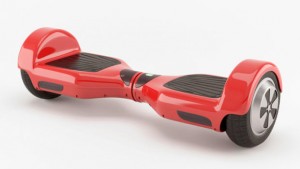
Hoverboards have spiked in popularity and quickly become one of the most popular toys in America. But these devices may just be explosions waiting to happen. Hoverboard toys are generally motorized, two-wheeled, self-balancing scooters that can travel at speeds up to 10 to 12 miles per hour. While they may appear to be fun and safe, multiple problems have been reported with hoverboards.
Reported cases of malfunction allege poor design, improper manufacture, and lack of sufficient warnings. Injuries from hoverboards primarily consist of physical injuries caused by operators. Hospitals across the country saw a spike in patients over the holiday season due to hoverboard accidents. Typical reported injuries have been wrist and back sprains and crushed fingers. In more serious cases, riders have suffered fractures and concussions. While some of these injuries have been caused by operator error due to a lack of balance, possible electronic malfunctions may prevent riders from adequately controlling their speed or braking, resulting in possibly life-threatening injuries. In other instances, hoverboards have spontaneously burst into flames and exploded, leading to catastrophic property damage and even the destruction of buildings and homes.
Responding to these problems, the U.S. Consumer Product Safety Commission has launched at least ten (10) fire-related probes in nine states. While the agency has not issued any recalls, it has cautioned consumers against purchasing or using hoverboards. Abroad, officials in the U.K. found that, for hoverboards imported from outside the European Union, over 88% failed basic safety checks. Most of the fires and explosions have been caused by defects in the lithium-ion batteries used to charge the boards. As manufacturers sought out the cheapest suppliers, to allow them to sell more boards at a lower price or a higher margin, many have used cut-rate batteries with inadequate designs that have led to disastrous consequences.
Retailers and others are beginning to respond to issues associated with these dangerous products. Online retailer Overstock recently banned sales of hoverboards due to safety concerns. Amazon has also banned many hoverboard versions. All major U.S. airlines have now disallowed hoverboards onboard.
Manufacturers and retailers marketing them may be liable for damages for injuries caused by defective hoverboards. Given how new hoverboards are and how complicated product liability cases can become, it can be difficult to hold manufacturers and others liable for their defective products. While hoverboard liability cases will present complex issues, the attorneys at Pope McGlamry are experienced in litigating complex product liability cases and can help you recover for injuries or damages to property sustained from hoverboards. If you have been affected by a defective hoverboard, please call Pope McGlamry today at 877-285-7656 or contact us online.




